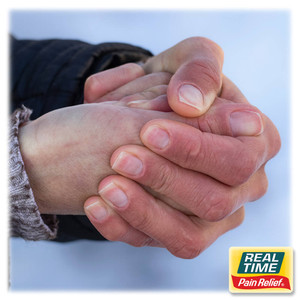Easing Cervicogenic Headache: Natural Relief for Neck-Related Pain
Posted by Dennis R Escalera on 1st Nov 2025
A cervicogenic headache is more than just an ordinary headache — it’s a type of pain that originates in the neck and radiates toward the head, often behind the eyes or on one side. For many people, long hours spent at a computer, repetitive neck movements, or poor posture contribute to this type of discomfort. Fortunately, relief can be found in simple lifestyle adjustments and topical creams and lotions made with nature’s ingredients, which help ease muscle tension and improve circulation naturally.
Understanding Cervicogenic Headache
Unlike tension or migraine headaches, cervicogenic headaches are secondary headaches, meaning they stem from another physical issue — in this case, a problem in the cervical spine (the neck region). The pain typically arises from joints, muscles, or nerves in the upper neck that send pain signals to the head.
Common triggers include:
- Poor posture: Slouching or craning the head forward while looking at screens.
- Neck injuries: Whiplash or minor trauma affecting neck alignment.
- Muscle tension: Tightness in the suboccipital or upper trapezius muscles.
- Repetitive strain: Prolonged work at desks, phones, or machinery that keeps the neck in one position.
Symptoms often include a steady, one-sided headache, neck stiffness, reduced range of motion, and tenderness in the shoulders or upper back.
How Posture Plays a Role
Modern work habits make cervicogenic headaches increasingly common. The “tech neck” posture — head bent forward, shoulders rounded — places constant strain on the neck muscles and joints. Each inch the head tilts forward adds several pounds of pressure to the cervical spine, leading to fatigue, stiffness, and pain over time.
Correcting posture through ergonomic adjustments and gentle stretching can greatly reduce the frequency of these headaches. Simple steps like adjusting screen height, taking breaks, and supporting the lower back help maintain spinal alignment and reduce muscular stress.
Conventional Treatments
Traditional management includes:
- Physical therapy to strengthen neck and shoulder muscles.
- Manual therapy and massage to release tension.
- Over-the-counter pain relievers like NSAIDs for temporary relief.
- Trigger point therapy to reduce localized pain.
While these can help, many people prefer complementary approaches that work without relying solely on medications — especially when used regularly for workplace-related strain.
Nature’s Ingredients for Natural Relief
Topical pain-relief creams and lotions with nature’s ingredients can be a gentle yet powerful way to manage cervicogenic headache pain. When applied to the neck, shoulders, or upper back, these formulations work through both cooling and warming sensations to relax muscles and improve circulation.
Here are some of the most effective natural ingredients:
- Menthol: Provides a cooling effect that soothes nerve endings and reduces pain perception.
- Eucalyptus Oil: Promotes relaxation, helps relieve muscle tension, and supports better airflow and oxygenation to tissues.
- Arnica Montana: Known for its anti-inflammatory properties, it helps reduce muscle soreness and stiffness.
- Peppermint Oil: Offers both cooling relief and mild analgesic effects.
- Camphor: Improves circulation and creates a gentle warming sensation that loosens tight muscles.
- MSM (Methylsulfonylmethane): Supports connective tissue health and reduces inflammation in muscles and joints.
When combined, these ingredients create a multi-sensory relief effect — cooling the surface pain, improving mobility, and promoting deeper comfort without harsh chemicals or synthetic fragrances.
Self-Care and Prevention
In addition to topical relief, preventing cervicogenic headaches involves daily care habits that support healthy posture and reduce neck strain:
- Adjust Your Workspace: Keep your monitor at eye level and your chair supportive.
- Take Frequent Breaks: Every 30–45 minutes, stretch your neck and shoulders.
- Use a Supportive Pillow: Maintain proper alignment during sleep.
- Stay Hydrated: Muscles and joints function better with adequate hydration.
- Practice Gentle Neck Exercises: Try chin tucks and shoulder rolls to strengthen postural muscles.
Adding a topical pain-relief cream or lotion to your daily wellness routine can enhance these efforts by targeting tension directly at the source.
When to Seek Professional Help
If cervicogenic headaches persist or worsen despite self-care, consult a healthcare provider. Persistent pain could indicate underlying cervical spine issues or nerve compression that requires medical evaluation.
However, for most people experiencing posture-related neck tension, combining good ergonomics with topical relief made from nature’s ingredients provides a safe and effective way to manage discomfort naturally.
Final Thoughts
Cervicogenic headaches remind us how connected our neck, posture, and overall health truly are. By incorporating mindful posture, regular movement, and natural topical relief, you can reduce pain, restore flexibility, and feel your best throughout the workday.
Simple habits and nature’s soothing ingredients can make a powerful difference — helping you move from desk to door with greater comfort and ease.
References:





